There are six types of deer roaming our countryside. But don’t worry – they’re not as fearsome as they sound! They’re all plant eaters (of course), and the strange sounds they make are only scary if you’re another deer that doesn’t quite measure up. Let’s meet them.
Oh Deer!
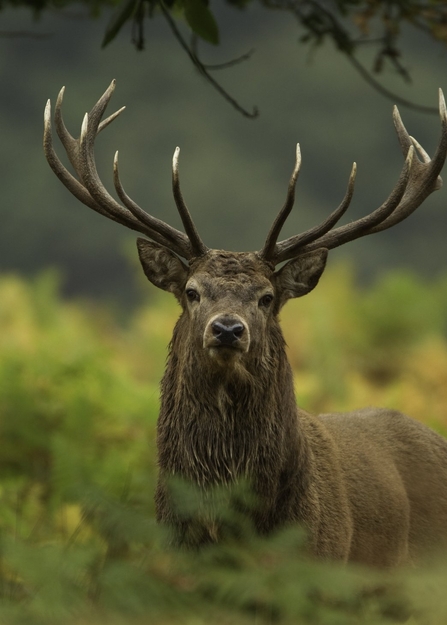
Danny Green/2020VISION
Red deer
Originally from: The UK
Claim to fame: The largest land animal in the UK. They’re huge!
Identifying features: Reddish-brown coats. Males have antlers with long branches and many points.
Sounds: Males roar and groan in autumn to tell their rivals how big and strong they are.
Where to find them: Mainly across moorland and forests in Scotland, East Anglia, the New Forest, the Lake District and south-west England.
Best time to see: September to November during the rut, when males gather their females together and compete noisily to be the boss.
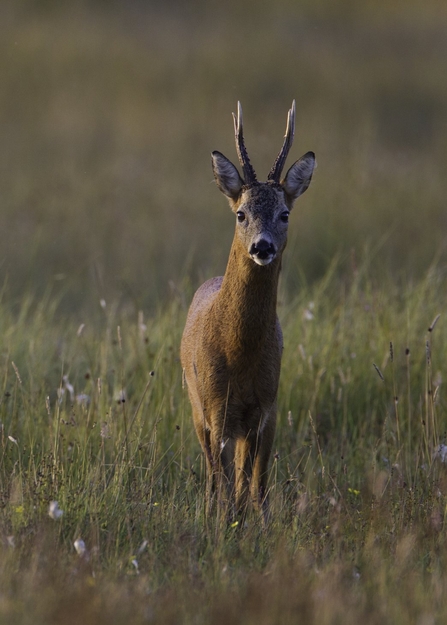
Roe deer buck - Mark Hamblin/2020VISION
Roe Deer
Originally from: The UK
Claim to fame: Females mate in summer but don’t become pregnant until the middle of winter, ensuring they give birth after the worst of the weather has passed.
Identifying features: Neat black moustache and white bottoms. Males have short, straight antlers with two prongs.
Sounds: Barks when startled.
Where to see them: All over the UK, except for Northern Ireland.
Best time to see: They’re pretty shy, but early mornings are best when they’re grazing at woodland edges or in open fields.
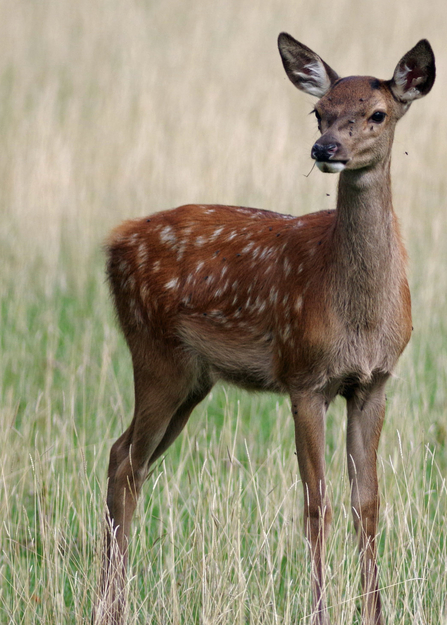
Fallow Deer - Gillian Day
Fallow Deer
Originally from: Mainland Europe
Claim to fame: Brought to the UK first by the Romans, then by medieval noblemen for hunting and feasting.
Identifying features: Spotty coats. Males have wide, flat antlers and really obvious Adam’s apples.
Sounds: Males groan during the breeding season to challenge others to a fight.
Where to see them: Across the UK, mainly in woodland.
Best time to see: At dusk and dawn, or at country parks (if you don’t mind cheating).
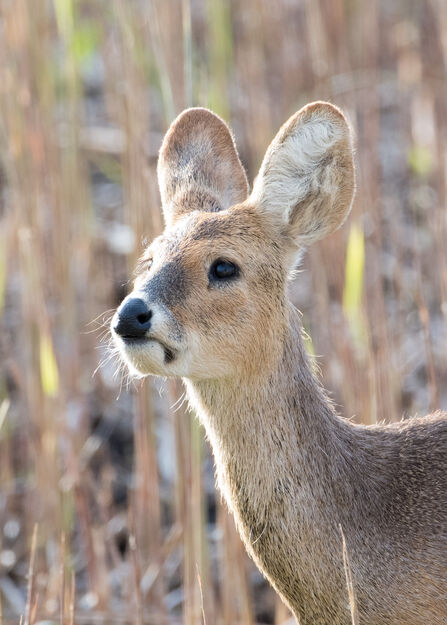
Chinese Water Deer - Donald Sutherland
Chinese water deer
Originally from: Brazil (Just kidding!) China obviously...
Claim to fame: The UK is home to 10% of the world’s population of these endangered deer, which escaped from zoos and parks.
Identifying features: Fang-like tusks, used by the males in place of antlers to fight for females. Large, teddy bear-like ears (aww). Yellow-brown coats.
Sounds: Alarm barks and screams. Males also squeak and whistle love songs to females.
Where to find them: Wetlands in eastern England.
Best time to see them: Often spotted on their own during the day.
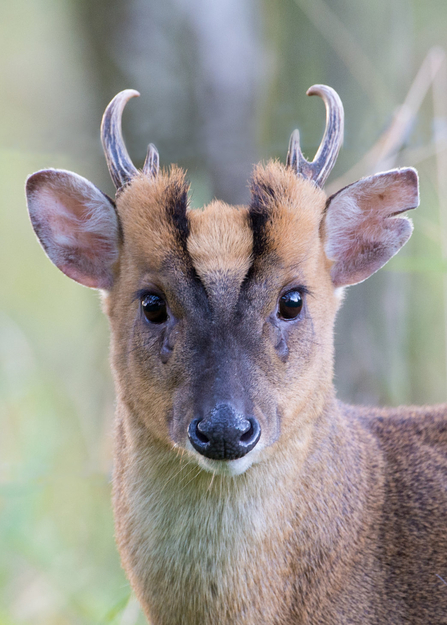
Muntjac Deer - Don Sutherland
Muntjac
Originally from: China
Claim to fame: Rub the large glands on their faces on leaves and twigs to leave smelly messages to each other. Also give birth all year round.
Identifying features: Wet, dog-like noses. Males have short, single-pointed antlers and tusks. Small but feisty!
Sounds: Loud barks when frightened. Mums and babies also squeak to each other.
Where to find them: Mainly eastern and central England, but spreading!
Best time to see: Can become quite tame, and be seen out during the day.
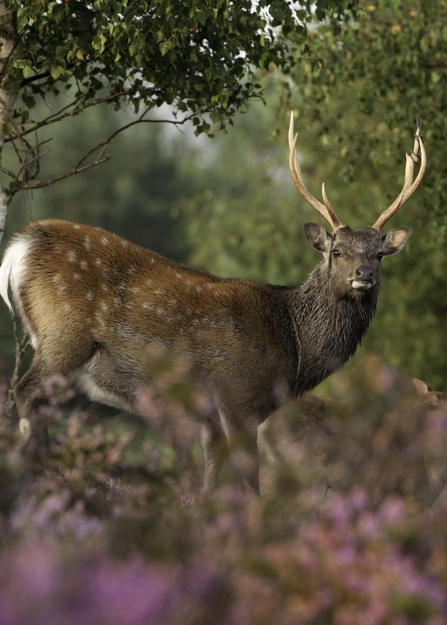
Sika Deer - Ross Hoddinott/2020VISION
Sika deer
Originally from: Japan
Claim to fame: Rubbish at telling other sika deer from red deer when looking for mates.
Identifying features: Spots in summer and dark shaggy coat in winter. White bottoms. Males have antlers with fewer points than red deer.
Sounds: The most talkative of all our deer! They squeak, groan, whistle and scream, and sometimes even blow raspberries at each other.
Where to find them: Conifer woods and moors in Scotland, Northern Ireland and some patches of northern and southern England.
Best time to see: Often spotted in small herds during the day.

